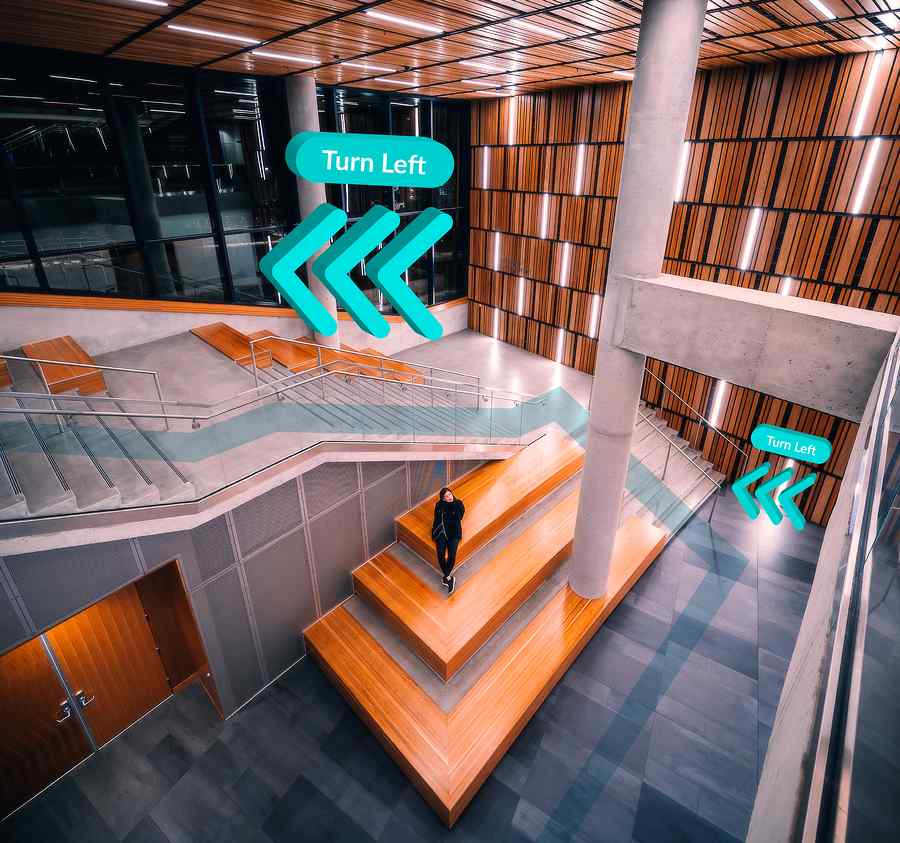INDOOR NAVIGATION SYSTEM
What is indoor navigation?
Indoor navigation systems are any collection of digital processes that help someone navigate their way through indoor spaces. They bear some resemblance to outdoor navigation techniques like GPS, with a few key differences:
Indoor navigation directs users with a higher degree of precision, accounting for building height and individual rooms.
Indoor navigation is well-suited to give directions where GPS signals are not readily accessible.
Indoor navigation can leverage augmented reality to give precise, real-world directions without relying on a traditional map view.
As buildings become more complex, owners and facility managers can use indoor navigation to direct visitors to key locations, help technicians find maintenance access points, and much more.
INDOOR NAVIGATION TECHNOLOGY
What are some indoor
navigation components?
Mapping
Indoor navigation systems often require a digital twin that represents rooms and corridors within a building. System designers can integrate hardware and software solutions to digital building replicas to show end-users how to navigate the real-world location.
Sensors
To provide accurate directions, indoor navigation systems can use positioning sensors that track an end-user location in real-time. These sensors might detect the distance to a connected smartphone, a computer chip in an employee badge, and more.
Navigation interface
Users need an interface that can input navigation requests and generate directions using a map or AR navigation assets. Indoor navigation apps on smartphones are particularly effective at filling this role, although some businesses opt for kiosk stations at key locations.
INDOOR NAVIGATION MARKET
Who uses indoor navigation?
Indoor navigation is not limited to any one business or industry. Building managers worldwide are realizing how the technology benefits staff and visitors alike while increasing overall workplace efficiency. Here are a few common examples:
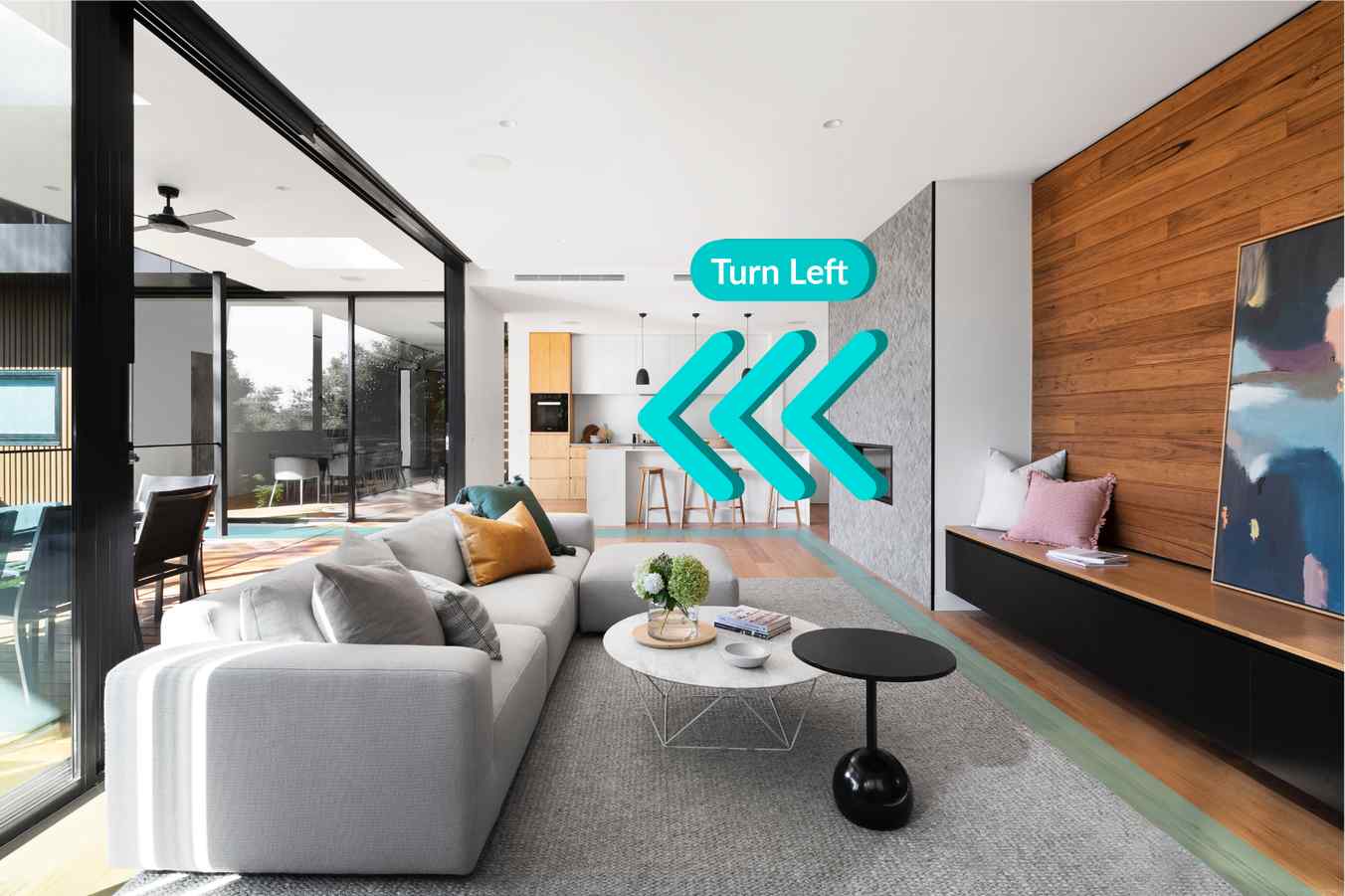
Hospitals
Visitors, patients, and staff can benefit when hospitals and medical facilities implement indoor navigation. Along with helping patients reach treatment rooms, cafeterias, or other facilities, rapid response teams can gain directions to priority areas during an emergency. Integrating navigation with other building systems can freeze elevators for priority traffic if required.
Retail
Retail businesses use indoor navigation to help customers find the right products. After downloading a smartphone app, shoppers can receive directions to specific categories, individual products, indoor facilities such as restrooms, and much more.
Enterprises
Any business can use indoor navigation for training purposes to orient new staff to a particular work site. Navigation apps are also beneficial to maintenance teams who need directions to ticketed areas or specialized access panels.
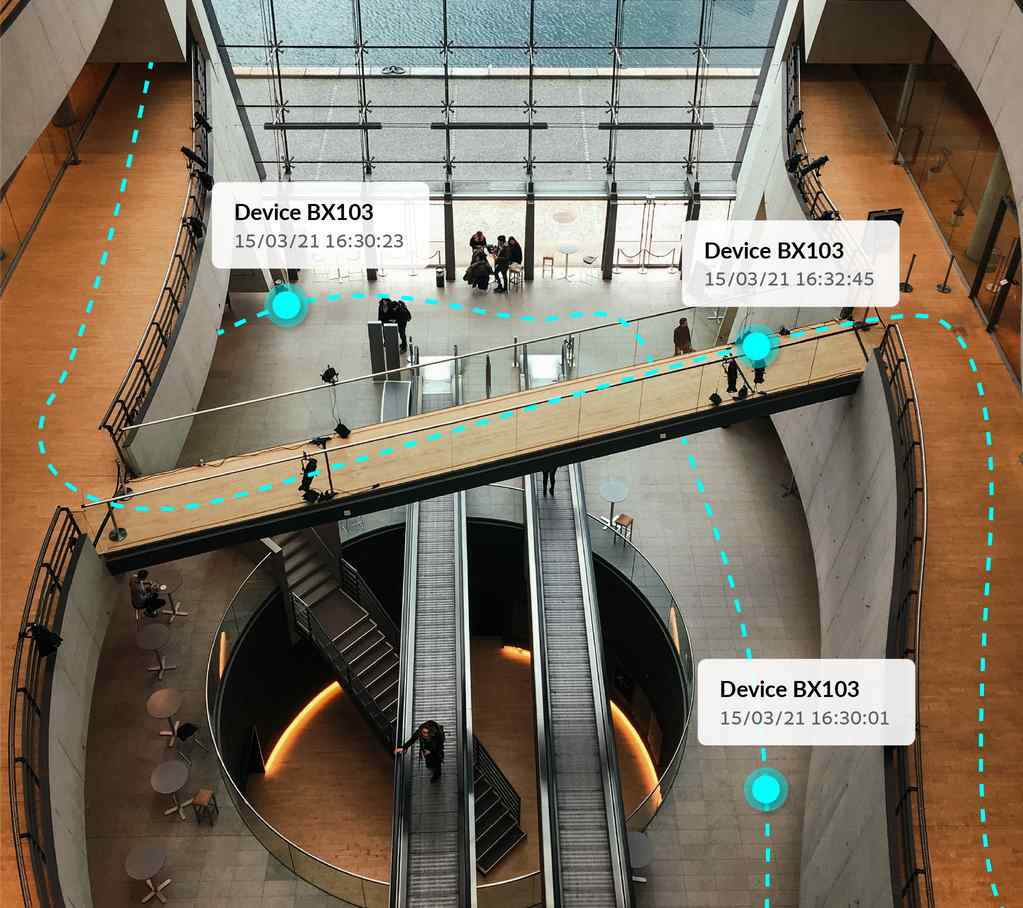
INDOOR GPS
What is the difference between indoor positioning and navigation?
The terms indoor positioning and navigation are sometimes used interchangeably, but they refer to two different systems.
Positioning systems are processes that determine where something is within a given space, usually in real-time. Navigation provides directions to a location from a starting point. A positioning system orients someone, a navigation system calculates the most efficient way for them to reach another area. Both processes are required if you want to use indoor GPS in real-time.
INDOOR NAVIGATION SENSORS
1. Choose a signal type
Indoor navigation requires a communication method that lets system hardware interact with each other. In most cases, the system connects wirelessly to a personal smartphone, but techniques will vary depending on the layout of each facility.

WiFi
Compatible with all modern smartphones and supports internet functionality.
Bluetooth
Uses short-range UHF radio frequencies to communicate with a wide range of compatible devices.
Infrared
Transmits light on a spectrum invisible to the human eye to communicate data, compatible with many smartphones.
Ultrasound
Low-level, short-range radio band that bypasses interference with most devices, slowly becoming compatible with most smartphones.
Visual light
Uses light-based transmitters to send signals between navigation devices.
Dead reckoning
Leverages motion sensors and uses the angle and time of arrival to calculate an equivalent position in a digital twin.
INDOOR NAVIGATION DEVICES
2. Choose navigation display hardware
Next, choose how to present the indoor navigation system to users. The most direct technique is a smartphone app, but some businesses, such as shopping malls or hospitals, use centralized kiosk stations to direct visitors.

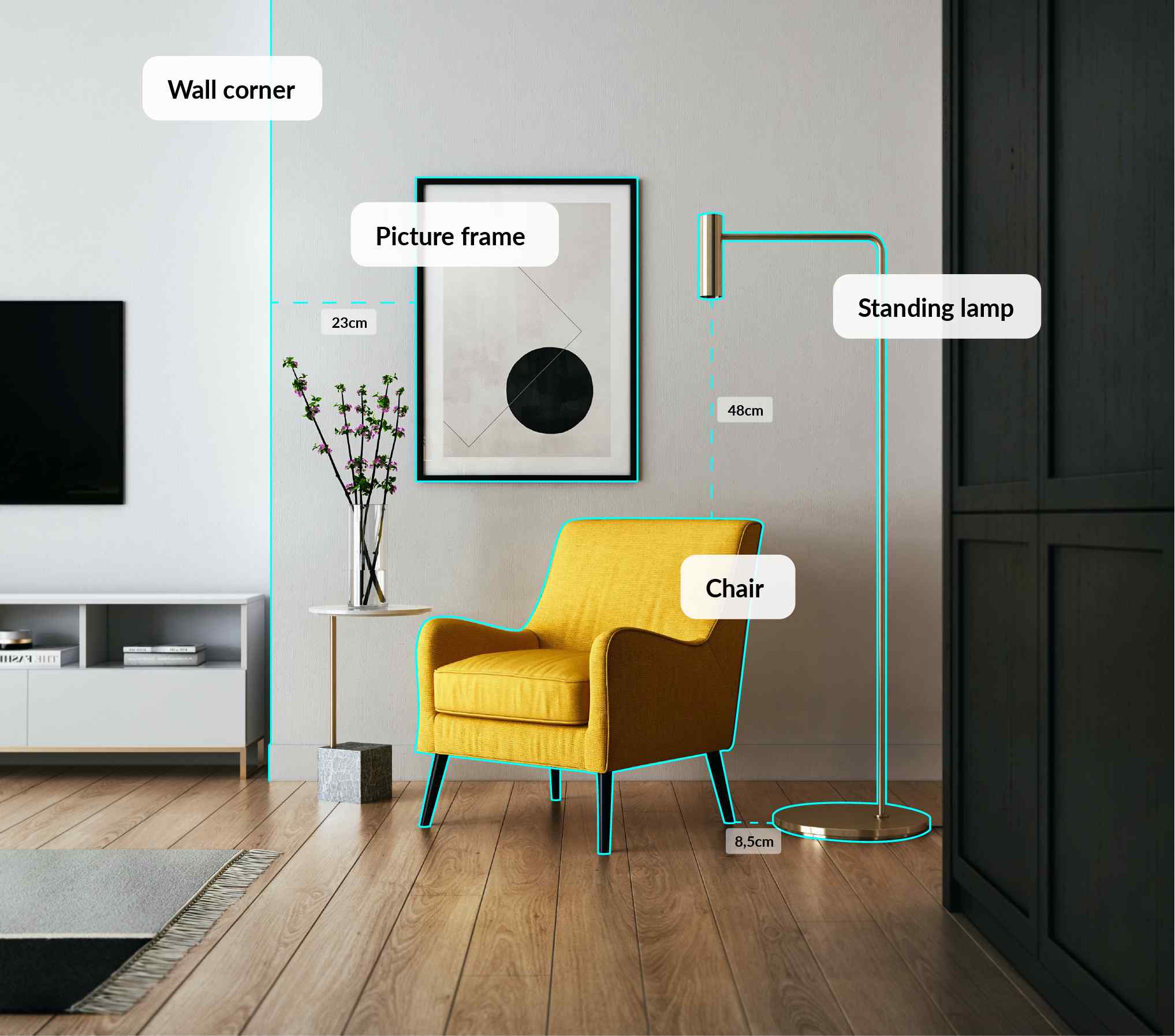
INDOOR NAVIGATION MAPPING
3. Digitize the physical space
You must digitize every real-world location and object that you want within the indoor navigation system. At a minimum, this will consist of rooms and hallways but may include equipment, maintenance access points, and other facility assets.
INDOOR NAVIGATION APP
4. Design your navigation software
Your indoor navigation software must bring your device hardware, sensors, and digital twin together into a format every user can understand. For example, an AR navigation solution will render directional arrows in a smartphone camera so anyone can visualize the exact route to a designated location.
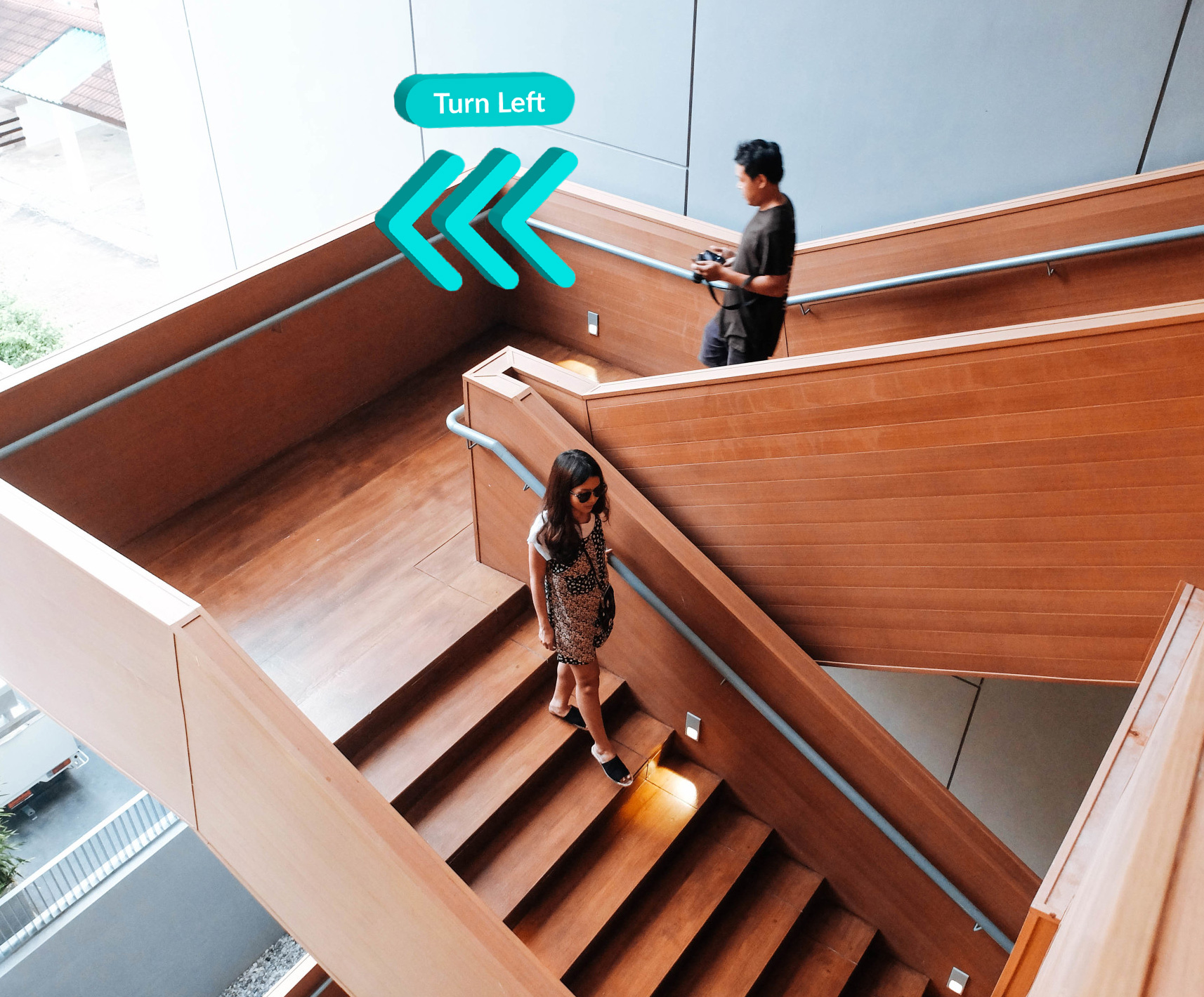
INDOOR MAPPING SOFTWARE
Meet Vera
Vera transforms physical spaces into intelligent digital twins so managers can implement a personalized indoor navigation solution. Vera’s built-in app solution powers your custom navigation service with 6 DoF positional tracking without any additional markers or hardware, making it highly effective in office buildings, retail stores, healthcare facilities, and more.
Resources
How AR Can Maximize the Value of a Lean Facilities Management Staff
The COVID-19 outbreak has put a strain on the global economy, and as a result, many businesses are...
3 Ways Retailers Can Use Augmented Reality to Increase Sales
In a world where everything is online and connected, many retailers are using modern technology...
Leading Retail Brands Profiting From Experiential AR
As our real and digital worlds become interconnected, augmented reality (AR) proves itself to be...

